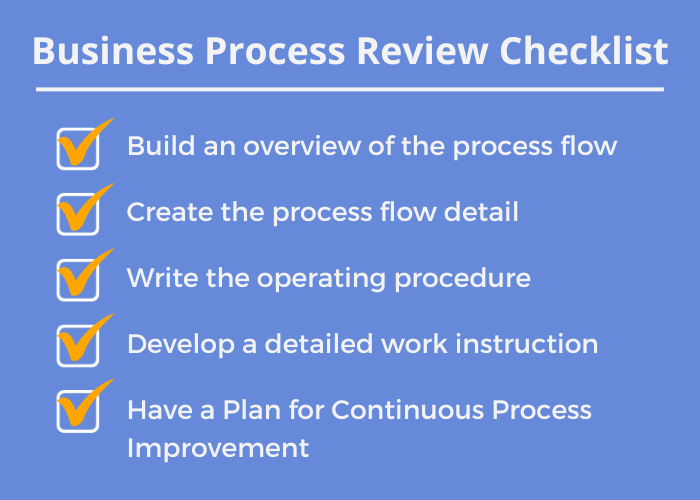Planning for success
Capacity planning in manufacturing is a big job and sometimes an even bigger headache. The methods we’ve seen used to perform this task include spreadsheets, whiteboards, pencils and paper, a big stick, and ERP software. In many cases, it’s a combination of any of the above.
In this article, we will explain how to structure your manufacturing capacity planning to work in any software. Our goal is to eliminate the need for using the “non-software” options listed above (although the big stick can usually be reassigned elsewhere effectively).
If you have found your way to this article, you most likely already understand what capacity planning is. So, we’ll focus on a discussion of the variables and scenarios to consider when structuring your system for capacity planning.
What Is Manufacturing Capacity Planning?Manufacturing capacity planning is the process used to establish how much of your resources are required to fulfill demand. Capacity planning is made up of three resource types: machines, people, and tools. One or more of these types are used to perform an operation on a job. For planning purposes, we want to know how many hours in a day/week/month each of these resource types are available for use. Then, we compare those hours to all job operations that require those resources, and how many hours of their available time are needed for each operation. In a nutshell, this is what we are trying to calculate to develop a proper capacity plan. |
Related: Managing Capacity Because It's What You Sell
Production Capacity Planning Variables
Now let’s look at some of the many variables to consider when trying to structure your manufacturing capacity.
Capacity
This is the easy one. As discussed above, available capacity is simply how many units of a particular resource are available for any length of time. For example, you have two identical CNC machines that can do the same work. Your plant works two shifts for eight hours each. So, the available work capacity for the CNC resource would be 32 hours per day: (2) machines x (8) hours x (2) shifts. Remember to account for holidays and maintenance down time when calculating capacity.
Setup/Run Hours
To consume capacity, we need to accurately define how much time a specific operation on a job will take to move through a resource. Generally, this consists of a combination of setup time, which would be a static number, and run time, which would be variable (in most cases), depending on number of items on the job. The total hours would be compared to the total capacity of the resources needed for planning.
Utilization
Utilization is a measurement of capacity usage. Using another manufacturing capacity planning example, if a resource (person, group, machine) is available for eight hours of work in a day and only six hours’ worth of work was reported, then utilization was 75 percent. This could have been multiple jobs totaling six hours, or just one job that took six hours – it would still be 75 percent utilization for that resource. This is critical to capacity planning, as it is a measure of actual capacity as opposed to estimated capacity. For capacity planning purposes, this can be a critical factor to consider.
Efficiency
Not to be confused with utilization, efficiency is the measure of actual setup/run time versus estimated setup/run time for an operation. For example, you estimated the CNC machine would take one hour to set up and 10 minutes of run time per piece on a particular operation. If, in reality, it took two hours to set up and 11 minutes of run time for each item, our efficiency is less than 100 percent. So, we require more capacity than originally planned for. Now think about the compounding effect that could have if many operations were off by even a small percentage.
Queue time/move hours
Just because an operation is scheduled to finish at a certain time in one resource, does not mean the next resource can immediately start running it. In a “cell”-type flow, this can be minimal – but in more common scenarios, it takes a material handler to move a job from one resource to the next. This is a good example of how a machine’s utilization can be affected, since it may sit idle while waiting for the next job to be available.
Offset hours
Here’s another simple manufacturing capacity planning example: A job for 60 widgets goes through only two operations, a SAW and CNC. The SAW operation should take two minutes of run time each, while the CNC operation takes six minutes of run time. To keep it easy, we won’t consider set up time. Total resource time is eight hours (two hours in the SAW and six hours in the CNC).
From a capacity planning standpoint, this job may progress a few different ways. First, once the SAW operation is complete, we could start planning the CNC. So, if we start the SAW at 8 a.m., the CNC needs to be ready by 10 a.m.. Or, we could “offset” the SAW hours. In other words, instead of waiting two hours to complete all 60 parts before moving them to the CNC, we might take a portion of the widgets from the SAW immediately over to the CNC to begin work. Both the SAW and CNC could be working on the same job, at the same time – at least for the 1 hour and 58 minutes when the first part came off the SAW and started in the CNC. In this case, the CNC would need to be ready at 8:02 a.m. (assuming we offset the time for one piece on the SAW).
Knowing ahead of time how you would plan for operations that can be offset can make a massive impact on your capacity planning.
Concurrent resources
Now the real fun begins! Up until this point, we’ve discussed individual resource capacity. However, you may have operations that require several types of resources. For example, the CNC machine itself is required, but it also needs a labor resource to set it up, and perhaps run it. And maybe it also needs a specific tooling fixture to perform the operation.
From a capacity planning standpoint, all three resources need to be available at the same time to complete the operation. To further complicate things, perhaps the labor resource is able to run multiple CNC machines at the same time – although he can only set up one at a time. Maybe the setup needs to be done by an entirely different labor resource! This can get confusing once you start multiplying all of the jobs and resources that are processed on a daily basis.
Related: Free ERP Consulting Discussion
Where do I start with manufacturing capacity planning?
Once you have a good understanding of all the variables, you can begin structuring your manufacturing capacity planning. How you approach this will largely depend on the tools you are using to manage it: spreadsheets, whiteboards, pencils and paper, or ERP software.
The best approach is to start simple and eliminate as many variables as you can.
1. Perform time studies or collect live production data to update your routings. If you base your operation run times on an estimate, the only way you will be able to plan capacity is to validate your estimated time with actual time – assuming you will run this job again. Actual can change every time you run the job, but you should be as close to actual as you can get.
2. Decide which type of resource is the long pole. For operations that require concurrent resources, choose which one you want to use to plan capacity. In our CNC example above, I would use the CNC resource as the scheduling target. While the tool and the labor may be needed at the same time, the CNC machine is most likely the resource that would be the bottleneck (your situation may be different).
3. Adjust your capacity hours to match your utilization hours. Of course, only do this if there’s a definite pattern for utilization for a particular resource. In other words, don’t change your capacity based on a few day’s utilization reports. You need a clear indicator that a resource does not get used 100 percent of the time on a regular basis. We want to take this into account when loading operations.
Power BI Reporting & AnalyticsPower BI could revolutionize your business by turning your ERP data into clear insights. Want to see Power BI in action? |
4. Focus on the “perceived” bottleneck. If you know which resource determines when a job can get through the shop, get as close to perfect as possible on the capacity, utilization, setup and run times for that resource. Schedule that resource first, then pull/push the operations on either side of it. This helps eliminate all of the variables on the resources that really aren’t causing scheduling delays. I say “perceived” because there are times when you think you know what the bottleneck is, only to find out after you increase its capacity that it wasn’t the bottleneck after all.
5. What if. This pertains to those using a more advanced ERP solution with the capability to create “what if” scenarios. What if I buy another machine? What if I hire another assembler? What if I work overtime? These are all scenarios that a top manufacturing capacity planning software can simulate for you, and give you a much better long-term picture for capacity planning. This is also where you can validate the “perceived” bottleneck being the true constraint.
6. Labor reporting. Everything discussed so far is related to defining and loading capacity. Just as important is relieving the schedule to free up capacity. Think of capacity in plumbing terms
- The sink is your defined capacity
- The faucet is your new order
- The drain is your labor reporting
For a sink to work properly, all three elements described above need to be functioning properly. If there is no drain, the sink will overflow. If there is no labor reporting, your schedule will be bloated, because work that has already been completed is still being scheduled. A consequence of that is your run sheets (who should be working on what and when they should work on it) are inaccurate. This inaccuracy, repeated day after day, sows doubt about the system that created it. This has a long-term negative effect. After a period of time, it becomes common knowledge that the ERP system “doesn’t work”.
Related: What is Infor CloudSuite Industrial?
Conclusions
Manufacturing capacity planning is one of the most difficult processes to perfect in any environment. I consider it to be more like the medical profession, where it’s referred to as a “practice.” It takes a lot of data analytics and manufacturing expertise to develop a good capacity plan.
Considering all of the variables involved, creating a solid plan on a whiteboard, or even Excel, can be an extremely time consuming, never-ending exercise. The good news is that an ERP software solution can do most of the hard work for you – leaving you more time to focus on improving processes, setups, runtimes, etc. Questions? At Visual South, we can help lead you down the right path when looking for a manufacturing capacity planning software.









